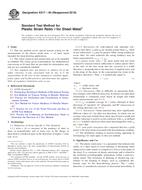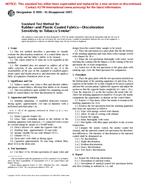1.1 This practice covers the measurement of radionuclides in water by means of gamma-ray spectrometry. It is applicable to nuclides emitting gamma-rays with energies greater than 50 keV. For typical counting systems and sample types, activity levels of about 40 Bq (1080 pCi) are easily measured and sensitivities of about 0.4 Bq (11 pCi) are found for many nuclides (1-10). Count rates in excess of 2000 counts per second should be avoided because of electronic limitations. High count rate samples can be accommodated by dilution or by increasing the sample to detector distance.
1.2 This practice can be used for either quantitative or relative determinations. In tracer work, the results may be expressed by comparison with an initial concentration of a given nuclide which is taken as 100 %. For radioassay, the results may be expressed in terms of known nuclidic standards for the radionuclides known to be present. In addition to the quantitative measurement of gamma-ray activity, gamma-ray spectrometry can be used for the identification of specific gamma-ray emitters in a mixture of radionuclides. General information on radioactivity and the measurement of radiation has been published (11 and 12). Information on specific application of gamma-ray spectrometry is also available in the literature (13-16).
1.3 This standard does not purport to address all of the safety concerns, if any, associated with its use. It is the responsibility of the user of this standard to establish appropriate safety and health practices and determine the applicability of regulatory limitations prior to use.
Product Details
- Published:
- 01/01/1995
- Number of Pages:
- 8
- File Size:
- 1 file , 70 KB


